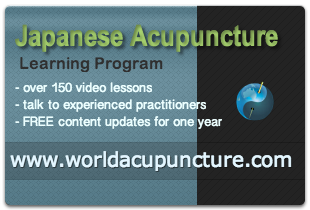This article was written and submitted for publication by Kelly Kilpatrick.
Many thanks for your interest and commitment Kelly.
The Difference between Chinese and Japanese Acupuncture
When you think of acupuncture, it’s natural to think Chinese in the same breath. Not many people are familiar with the Japanese version of this therapeutic form of treatment. Both forms have their roots in the Orient, but the major similarity is found only in the name. The differences between Chinese and Japanese acupuncture methods are detailed below:
• The size of the needles: The Japanese tend to use smaller and finer needles than the Chinese, as a result of which, the pain is considerably reduced.
• The method of insertion: The Japanese use metal or plastic tubes to guide the needles into your skin, a technique that is designed to enhance accuracy and reduce pain. The needles are also cleaner and free from infection.
• The depth of needle insertion: Needles in Japanese acupuncture are inserted more gently and superficially (they do not pierce deeply) than the Chinese method.
• The use of herbs: Chinese acupuncturists rely on a combination of needles and herbs to cure or prevent disease and afflictions, since herbs are an essential part of the whole Traditional Chinese Medicine (TCM) concept. Japanese acupuncturists on the other hand, do not normally use any form of herbs in conjunction with acupuncture but refer to specialist Kampo (Herbal) practitioners who’s qualifications include a degree in pharmacy.
• Less de qi sensation: The tingling sensation you feel when the needles are inserted and twisted into position or the de qi sensation is not as strong with Japanese acupuncture as it is with the Chinese version.
• The reliance on touch: Japanese acupuncture practitioners rely on touch rather than on sight to decide on the entry points for the needles. Every acupuncture point is palpated before the needle is inserted.
• The use of moxa: Most Japanese acupuncturists use moxibustion as part of their acupuncture routine. This technique involves warming the acupuncture points by burning moxa, derived from the mugwort plant, above the skin before the needles are inserted.
Deciding on the best acupuncture form is a matter of personal choice, one that depends on the nature of your illness, your familiarity with the practitioner, whether you’re seeking relief from the symptoms or a holistic prevention approach, and on what seems to work for you. Make sure you’re informed about the pros and cons of any treatment form before you begin.
By-line:
This post was contributed by Kelly Kilpatrick, who writes on the subject of the top ten pharmacy schools. To check out more of Kelly’s post go to http://www.uspharmd.com
She invites your feedback at kellykilpatrick24@gmail.com.

Interesting! I didn’t know there also exist a Japanese version of Acupuncture and its more gentle than with the Chinese version. I’ve always known Chinese with acupuncture, so I think after reading this I’m going to try the Japanese version. Thanks for sharing!